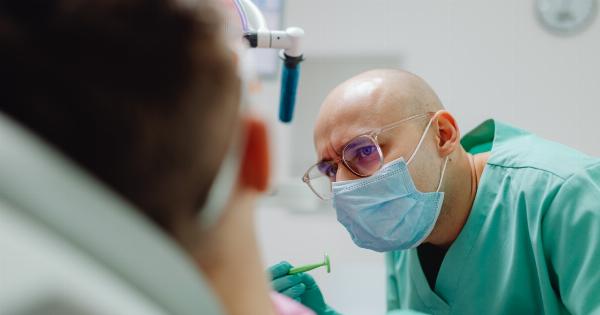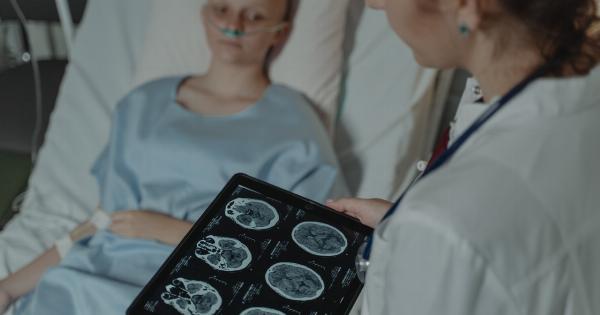Anesthesia has been a crucial part of modern medicine, allowing doctors and surgeons to perform complex procedures without causing pain to patients.
However, anesthesia also has numerous risks and side effects, including nausea, vomiting, headaches, and even death in rare cases. Fortunately, a recent breakthrough in medical technology could eliminate the need for anesthesia altogether, making surgeries and other medical interventions safer, faster, and more comfortable for patients.
What is Anesthesia and How Does It Work?
Anesthesia is the use of drugs to suppress consciousness, sensation, and reflexes in a patient, preventing them from feeling pain or discomfort during medical procedures.
There are several types of anesthesia, including general, regional, and local anesthesia, depending on the level of sedation and the area of the body affected.
General anesthesia is the most common type of anesthesia, used for surgeries that require complete unconsciousness, such as brain surgery or major abdominal procedures.
It is usually administered through IV or inhaled gas, and puts the patient in a deep sleep-like state, allowing the surgeon to perform the procedure without the patient feeling any pain.
Regional anesthesia blocks nerve signals in a specific area of the body, such as the arm or leg, using injections or nerve blocks.
It does not affect the patient’s consciousness, but allows for pain relief and muscle relaxation during the procedure.
Local anesthesia numbs a small area of the body, such as a tooth or a skin lesion, using a topical cream or injection. It is typically used for minor procedures that don’t require sedation or complex surgical techniques.
The Risks and Side Effects of Anesthesia
While anesthesia is generally considered safe and effective, it does carry some risks and potential side effects, which can vary depending on the type of anesthesia and the patient’s medical history.
Some of the common risks and side effects of anesthesia include:.
- nausea and vomiting
- headache and dizziness
- muscle aches and soreness
- confusion and memory loss
- allergic reactions to the drugs or equipment
- breathing problems, including airway obstruction and respiratory arrest
- heart problems, including irregular heartbeat and heart attack
- brain damage and coma in rare cases
While these risks and side effects are relatively rare, they can be serious or even life-threatening, especially in patients with pre-existing medical conditions or those who are elderly or obese.
The Revolutionary Method: Enhanced Recovery After Surgery (ERAS)
Enhanced Recovery After Surgery (ERAS) is a novel approach to perioperative care that aims to minimize the surgical stress response, reduce inflammation and pain, and accelerate recovery and return to normal function.
ERAS protocols involve a multimodal, multidisciplinary approach that includes early mobility and nutrition, minimally invasive surgery, and patient education and engagement.
ERAS protocols have been shown to improve outcomes and reduce complications in a variety of surgical specialties, including colorectal surgery, orthopedic surgery, and gynecologic surgery.
They have also been tested in high-risk patients, such as those with chronic pain or opioid dependence, with promising results.
One of the key components of ERAS protocols is the use of local and regional anesthesia, instead of general anesthesia, whenever possible.
This can be achieved through various techniques, such as ultrasound-guided nerve blocks, epidural catheters, and peripheral nerve stimulators.
Local and regional anesthesia has several advantages over general anesthesia, including:.
- less risk of nausea, vomiting, and other side effects
- less impact on the cardiovascular and respiratory systems
- less need for invasive monitoring and airway management
- less need for postoperative pain medication and sedation
- faster recovery and return to normal function
In addition to local and regional anesthesia, ERAS protocols also include other strategies to minimize the need for opioids and other pain medication, such as non-opioid analgesics, nerve stimulation, and cognitive-behavioral therapy.
This can reduce the risk of opioid dependence and addiction, as well as improve pain management and patient satisfaction.
The Future of Anesthesia and Surgery
Enhanced Recovery After Surgery (ERAS) and other multimodal, multidisciplinary approaches to perioperative care are revolutionizing the way we think about surgery and anesthesia.
By emphasizing patient-centered care, personalized medicine, and evidence-based practice, these protocols can optimize outcomes, reduce costs, and improve quality of life for patients and their families.
While local and regional anesthesia cannot replace general anesthesia in all cases, it can be a safe and effective alternative for many surgeries, especially those that involve the limbs, abdomen, and pelvis.
As technology and research continue to advance, we may see even more innovative and less invasive approaches to anesthesia and surgery, such as non-invasive monitoring, virtual reality, and robotic-assisted procedures.
Whether we use anesthesia or not, the ultimate goal of medicine is to heal and improve the lives of our patients. By embracing new ideas and working together, we can achieve this goal in a safer, faster, and more compassionate way.































